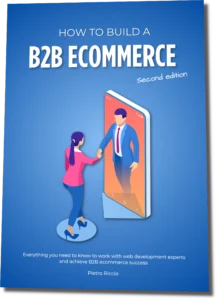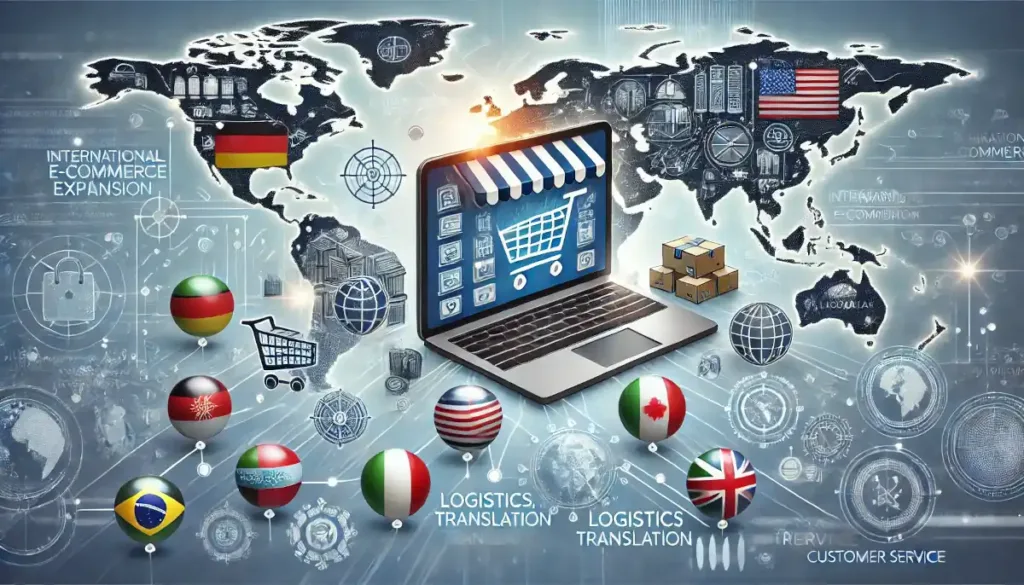One of the great advantages of e-commerce is the ability to internationalize your site, thereby expanding sales.
But which market should you start with? The choice is not obvious.
A common strategy for selecting the first foreign market is to start organically with a country that already places orders. However, starting to sell abroad in a structured way can be quite an investment, considering translation costs, setting up logistics, dedicated customer service, etc.
It’s better to spend a little time making additional considerations.
Based on an interesting presentation by several e-commerce managers at a past edition of the Internet Retailing Expo in 2018, I will share some strategies discussed for expanding into foreign markets and the main challenges companies might face.
Contents
How to choose the first international market to expand into?
In the UK, logic would suggest starting with an English speaking country, where regulations and operations are easier to manage.
Another approach is to base the decision on search performance and the cost of PPC (Pay-Per-Click), a key component of the cost of entering a new market. Even distant markets, like Australia, could hold positive surprises. However, relying solely on this method can lead to unexpected outcomes in markets that seem promising but turn out to be more complex than expected.
For physical products, an additional method is to use logistics as a guide by opening “easy” delivery routes. This way, you can choose the path of least resistance to start selling in more countries. While these may not be the most promising markets, they are easier to manage. Brexit doesn’t help, but a logistics center in the EU might help.
Finally, consider how much you can reuse the existing functionality of your e-commerce platform, minimizing development and customization efforts.
Returns and new markets
Return rates can also significantly impact profitability in a new market. For example, some countries may have a very high return rate, where customers buy and return items much more frequently than in other markets. This behaviour can heavily affect the bottom line and cause companies to rethink their approach to that market.
Some companies even consider withdrawing from a market if returns exceed certain levels, as it may become unsustainable to maintain a presence in that market.
In other sectors, such as furniture, return rates may not vary much from country to country. Companies may not see significant differences between markets and can manage returns similarly across regions.
Unexpected challenges
Some markets, like China, can be extremely complex from a cultural perspective but also very promising. Other markets, like the United States, can be highly competitive, with very high PPC costs. In such cases, a growth strategy based on organic traffic, followed by competing in paid search, can be effective.
In some cases, initial success in a new market can be compromised by external factors. For instance, entering a market based on a good advertising deal or relying on an organized distributor may not be worthwhile if internal operations need to be overhauled.
How to enter a new market, and when to exit?
Some companies take a gradual approach to new markets, starting with creating shipping routes. Once sufficient sales volume is generated, translation and localization of the site follow—this may include managing different taxes and currencies, active marketing, and dedicated customer service. Based on the market’s response, they can decide whether to move to the next level or withdraw.
Other companies prefer not to proceed gradually, as taking only the first step might fail, whereas completing three phases could lead to success in the new market.
It’s wise not to enter an international market without considering when it might be necessary to exit.
One option for companies is to maintain a presence in a market even at a loss, as long as it’s not too costly and the customer experience is at least acceptable. However, if the customer experience turns negative, it might be better to exit, as recovering from a damaged reputation is very difficult.
What is the best pricing strategy for international markets?
A critical aspect is maintaining price consistency. If you are planning to sell to the EU, please be aware that you are required to keep your price consistent across websites serving European countries.
One issue with having different prices on different sites is that users from market X might try to buy from the site in market Y, where the product is cheaper. This could cause logistical and customs problems, leading to refunds and other risks.
What market research should be conducted before entering a new market?
From an e-commerce perspective, before entering a new market, it’s important to investigate consumer expectations regarding delivery conditions, product information, and free shipping thresholds. Some companies prefer to analyze competitors to gather valuable insights into market expectations and behavior, such as delivery times or preferred payment portals.
Does a physical presence help when entering new markets?
It’s difficult to measure the return on investment (ROI) of a physical presence, and its usefulness depends heavily on the industry.
From a purely e-commerce perspective, a physical presence like a warehouse could improve the user experience, especially if your product is atypical and requires special storage, handling, or shipping.
If the sales channel is primarily online, an office might only serve public relations or branding purposes without becoming a true source of revenue.
Geoblocking: is it legal?
In the context of the EU, geoblocking, or the practice of restricting access to a website based on geographic location, is not legal.
Therefore, if I localize my Italian site into Spanish, I must still allow Spanish users to access the Italian site.
However, it’s a good rule of thumb to invite users to visit the most suitable site for them, as their user experience will be better. The use of pop-ups or overlays that invite users to visit the correct localized site is allowed. Some companies even offer discounts to encourage customers to switch to the localized site, especially if there is existing foreign traffic to redirect to a new localized site.
Conclusions
International growth represents a great opportunity for e-commerce. Simple strategies, such as integrating a warehouse network, developing modules to manage multiple store views, and using sophisticated shipping methods, allow even small manufacturers or retailers to access new markets.
If you’d like to discuss further, click here to request a consultation with us.
Who we are
Netsu is an e-commerce consulting company. We support small businesses in their e-commerce projects.
If you are thinking of building a new e-commerce site or modifying it to sell abroad, but your company doesn’t have in-house digital skills to understand the next step, feel free to request a consultation with us.
We offer a range of services and will be happy to accompany you on your journey.




